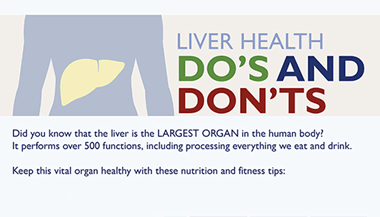Pancreatic Neuroendocrine Tumor
A pancreatic neuroendocrine tumor (NET) is a type of cancer that forms tumors in the pancreas. The pancreas is a gland that rests behind the stomach and in front of the spine. It has two main parts. The exocrine pancreas makes enzymes that enter the intestines and help us digest food. The endocrine pancreas makes certain hormones that are released into the blood.
(Pancreatic NET, islet cell carcinoma, islet cell tumor)
The hormone-producing cells of the pancreas cluster together in small groups, called islets, throughout the pancreas. When a tumor forms in one of these clusters, it's called a pancreatic NET, or islet cell carcinoma. Pancreatic NETs can be either benign (non-cancerous) or malignant (cancerous), although both types can cause serious health problems.
Facts about pancreatic neuroendocrine tumor
Pancreatic NETs are fairly rare. Healthcare providers aren't exactly sure why people develop them. One strong risk factor for the disease is a rare genetic disorder known as multiple endocrine neoplasia type 1 syndrome (MEN1 syndrome). This disorder causes tumors within the pancreas that are usually benign, but sometimes become malignant. It can also cause a problem with the parathyroid gland. This may result in kidney stones, tumors of the pituitary gland, and severe stomach ulcers. People with some other inherited syndromes, such as von Hippel Lindau (VHL) syndrome and neurofibromatosis type 1 (NF1), also have an increased risk of pancreatic NETs.
Types of pancreatic neuroendocrine tumor
Pancreatic NETs are classified into several types:
- Gastrinoma. Gastrin is a hormone that aids the digestion of food. When a tumor forms in gastrin-producing cells, it is known as gastrinoma.
- Insulinoma. Insulin helps control the amount of sugar, or glucose, in the bloodstream. When a tumor happens in this group of cells, it is an insulinoma.
- Glucagonoma. Glucagon also plays a role in the amount of glucose in the bloodstream, and in this case, it increases the amount of glucose present. A glucagonoma happens when a tumor arises among a group of glucagon-producing cells.
- Others. Other types of islet cell tumors make hormones that control the balance of water, sugar, and salt in your body. These include VIPomas, which affect vasoactive intestinal peptides, and somatostatinomas, which affect somatostatin. These types of islet cell tumors are often grouped together because they are treated in much the same way.
Symptoms
Specific symptoms of pancreatic NETs are different, depending on what type you have. Some NETs form in nonfunctioning cells. These don't make hormones and don’t cause symptoms for a long time. Ultimately, they may lead to some symptoms in the body because their growth puts pressure on other organs, like the bile ducts. Other pancreatic NETs cause symptoms because of the overproduction of hormones. Here is the breakdown of symptoms that you may experience:
Nonfunctioning NET:
- Yellowing on the skin or whites of the eyes (jaundice)
- Diarrhea and indigestion
- Pain or a lump in the belly or back
- Nausea
- Loss of appetite
Gastrinoma:
- Acid reflux
- Stomach ulcers
- Pain in the belly or back
- Diarrhea
Insulinoma:
- Blurred vision
- Weakness
- Fatigue (extreme tiredness)
- Lightheadedness
- Shakiness
- Irritability
- Hunger
- Rapid heartbeat
Glucagonoma:
- Diarrhea
- Weight loss
- Mouth sores
- Skin rash or dry skin
- Headaches
- Frequent urination
- Feeling tired or dizzy
- Blood clots in the lungs
VIPoma:
- Weight loss
- Abdominal cramps or pain
- Watery diarrhea
- Dehydration symptoms
- Symptoms related to low potassium levels. These include muscle weakness, aches, cramps, numbness, tingling, frequent urination, confusion, thirst, and rapid heartbeat
Somatostatinoma:
- Diarrhea
- Gallstones
- Yellowing of the skin or eyes
- Unexplained weight loss
- High blood sugar symptoms. These include weakness, hunger, confusion, headaches, frequent urination, and dry skin
Diagnosis
If you have any of these symptoms and your healthcare provider thinks that you might have a pancreatic NET, he or she will use a host of tests to find out for certain. This process starts with a physical exam and a full medical history. Next, a number of blood tests and other laboratory tests can yield further clues by looking for markers of the disease in the blood.
A number of advanced scanning techniques can also be used to look for the tumor within the pancreas. These include CT scans, MRI scans, ultrasound, and somatostatin receptor scintigraphy (SRS). In some instances, your healthcare provider may perform a biopsy. This is a surgery that removes cells so they can be checked under a microscope to look for cancer.
Treatment
The treatment for pancreatic NET varies based on the type of NET that you have. As a general rule, however, surgical removal of the tumor is the primary course of treatment whenever it’s possible.
For tumors that can’t be removed by surgery, or that have spread to other parts of the body, treatments such as chemotherapy, hormone therapy, other medicines, radiofrequency ablation, and cryosurgical ablation (freezing) are often used to shrink the tumor or destroy it.
Prevention
Experts don’t know how to prevent pancreatic NETs. The best thing you can do is be aware of your health, and contact your healthcare provider if you experience any of the symptoms listed above, especially in combination. People with MEN1 syndrome should be especially vigilant. They have a greater risk of developing the disease.
Managing pancreatic neuroendocrine tumors
In addition to the treatments for the specific cancers, your healthcare provider should also provide you with some choices for managing the symptoms that might come along with a pancreatic NET. This can include drug therapy to manage stomach ulcers, therapy or over-the-counter remedies to deal with diarrhea, or medicines or other strategies to keep your blood sugar in check.




